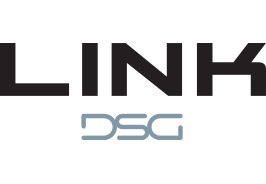Billboards. Electronic message boards on campuses and businesses. Restaurant menus. Brand messages that used to be distributed as print are more and more being directed to consumers via digital signage. While there are certainly advantages being able to update and quickly customize the messaging in digital signage, there are still valid reasons to promote your brand using traditional print messages, too. One of which is the relationship of the buyer to the brand.
There is more than one way to measure ROI. While it is simple to balance the dollars spent against the sales generated, there is another less tangible, but equally important measure: how your consumer will identify and relate to your brand message. In the article, Paper Beats Digital In Many Ways, According To Neuroscience, Roger Dooley notes that “despite the enormous migration to electronic media, neuroscience research shows that paper-based content and ads offer special advantages in connecting with our brains.” The research that Dooley refers to speaks to the brain’s ability to relate to media. The data shows that our brains are better equipped to respond positively to print. As we spend more time interacting with it, the product becomes better connected to us through our memory and we have a stronger emotional response to print over digital. Electronic messaging may be flashy and can offer interesting biometric information, but print still seems to resonate more effectively. It is tangible, real, and we can hold it in our hands and pass it to a friend. There is a transience to digital that doesn’t convey the same emotive quality of print. A printed brochure or card allows us to visit with the message on a more personal level, in our own space and on our own terms, rather than being bombarded with flashing and vibrating electronic images.
Brand messaging needs be consistent with the product and the buyer. It’s easy to assume that tech products might demand a larger digital presence and print seemingly would be more appropriate for brands that have an image that predates the electronic age. That case might be made for forcing the latest version of a time-tested product to us via digital signage as a flashy way to establish relevance in the Millennial buyer, but don’t forget the power of nostalgia. Katherine Halek of MillennialMarketing.com cites a study saying “research... shows that over 50% of millennials would prefer for print to remain a significant factor in their lives, even in the face of ever-increasing digitization.”
Think of the Millennials’ fondness for their parents’ or grandparents’ beers or clothing. They are attracted to the advertising from an age that predates digital. One that relied on print in all forms to convey a message. Even companies that are often only thought of as being a product of the digital age, such as Apple or Google, still use print advertising and direct mail to build brands outside of a crowded digital marketplace. They are hoping for a lasting connection, one that repeats and is more intimate than a digital banner. Think of the Apple Store, where the digital is left to the device screens, but the walls, windows, and floors are covered in high impact printed images to drive traffic and reinforce brand identity. And think of a future where only digital marketing strategies might be applied. There would be no opportunity to fully relate to the brand, as images and messages would be constantly in flux, constantly updating and never being allowed to sit with the buyer and build a lasting relationship. Print is critical to a brand’s long term relationship and identity with a buyer of any demographic. As far as we know, no one has ever pulled a digital sign off a wall, rolled it up and taken it home to hang on their bedroom wall. It could come to that one day, but for now, it appears that the printed message is more powerful than digital. It stands on its own with more authority, and at the very least, it is more powerful in conjunction with digital than digital will ever be on its own.





